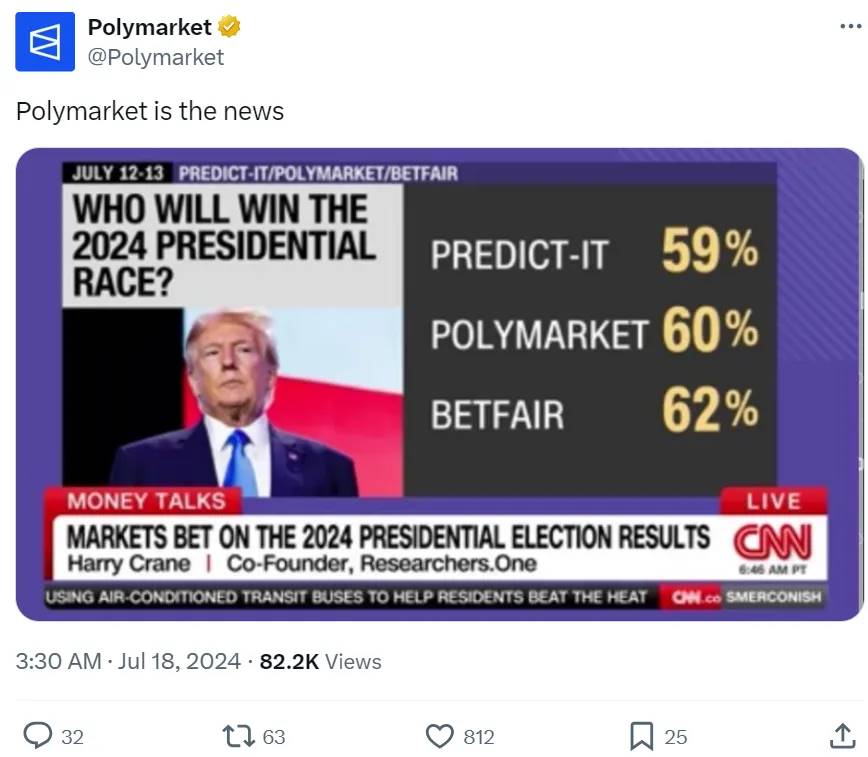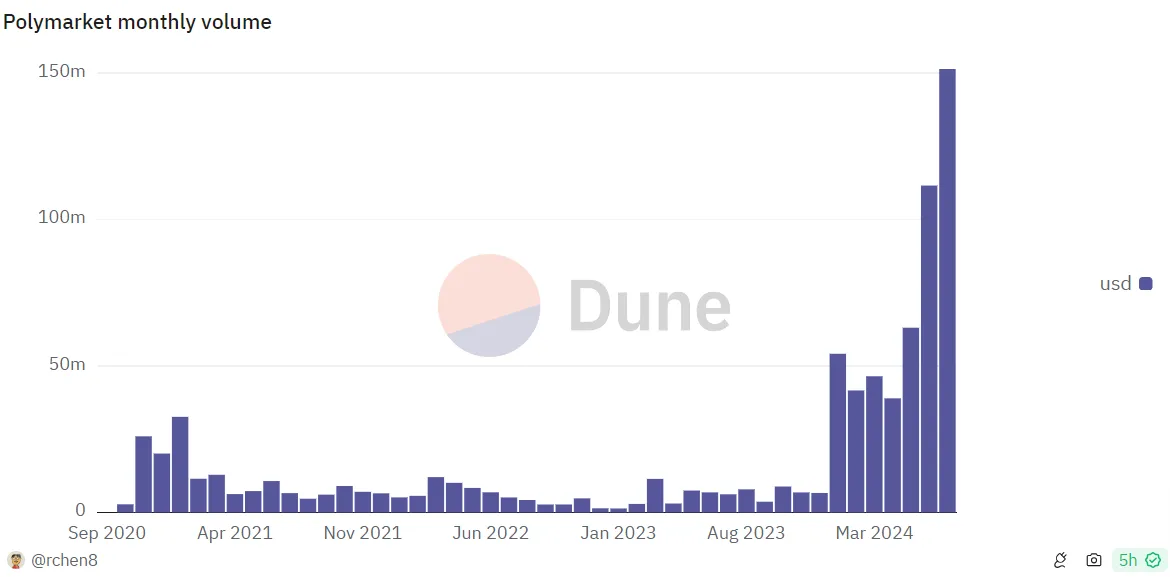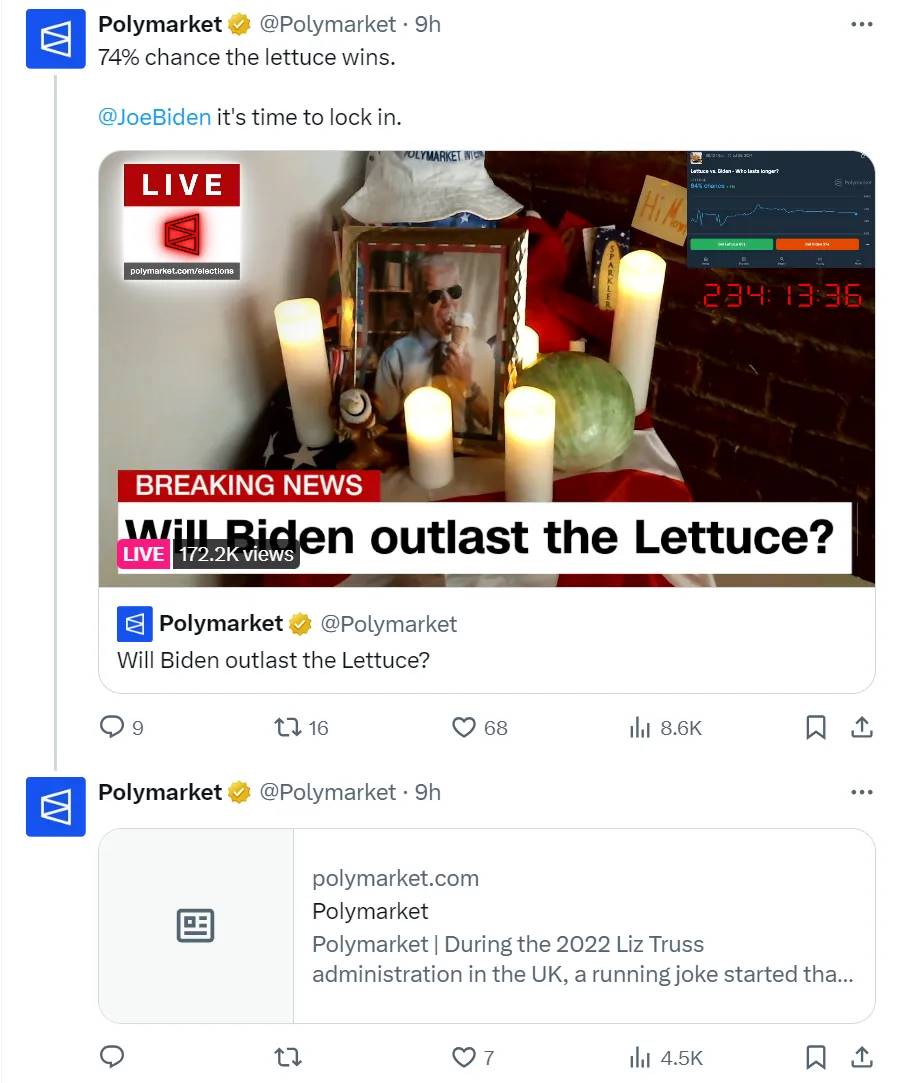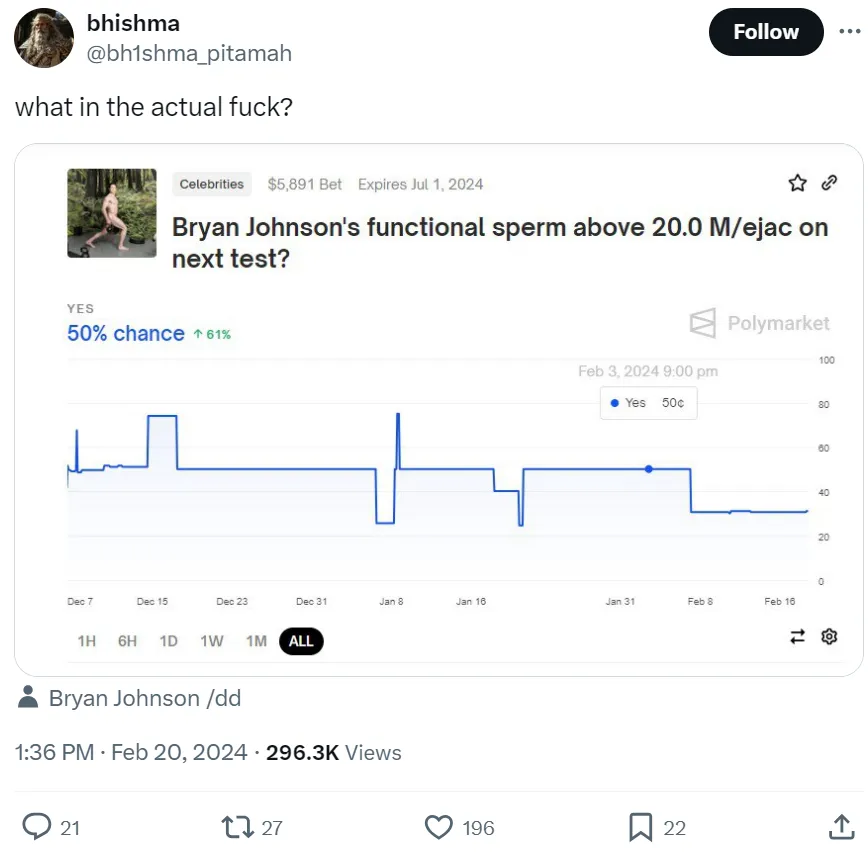Original author: Lawrence
原文翻译:TechFlow
出生
The year is 1503 and the papal election is underway. Citizens of the Papal States await the coronation of a new pope, even though the Papal States are in turmoil against the backdrop of the Italian Wars and the Protestant Reformation, and are surrounded by three hostile armies.
In Rome, many people waited with bated breath, not only because of the historic significance of the election, but also because they were betting on the outcome. Messengers (“sensali”) hired by banks ran around the city, delivering betting slips and changing odds in real time as the 39 cardinal electors were quarantined until a new pope was chosen. After a tense day, Cardinal Piccolomini, the 30-100 favorite, was elected Pope Pius III, becoming the 215th pope of the Catholic Church. Many citizens shed tears, some for the joy of winning their bets, others for the sadness of financial ruin.

However, for the avid gambler, Pope Pius III died of an infected leg ulcer after only 26 days in office. Another papal election was held within a month, giving the citizens of Rome another chance to make a comeback.
Over the next few decades, this story would repeat itself again and again—betting on the papal election became a normal and accepted activity for the citizens of Rome. By the end of the 16th century, it had become so rampant that the 229th Pope, Gregory XIV, stepped in and threatened to ban it outright, threatening excommunication.
However, history always repeats itself, and election betting is like a hydra, often banned but never gone away. Election betting resurfaced in the early 20th century. In the 1916 election between Charles Evans Hughes and Woodrow Wilson, the size of the betting pool swelled to $280 million today.
Today, in the United States, this practice is highly regulated and requires approval from the Commodity Futures Trading Commission (CFTC). More importantly, regulated markets cannot offer political event contracts, following a 2012 ruling. This leaves a huge gap in the market, providing a huge opportunity for emerging players.
Chaos Generation
We live in a highly dramatic world where aggressive attitudes are often rewarded. The rise of short-form video media has further fueled this trend as our attention spans become shorter in a world of information overload. In an age of instant gratification and material abundance (in developed countries), provocative content can bring attention and monetary rewards to creators. The 2024 US election is a prime example, one of the most controversial elections in the past few decades, which has also inspired the rise of prediction markets, making audiences even more fanatical in following their idols.
From sports to entertainment, betting has always captured human attention. Now, prediction markets are bringing that fascination to politics and more fringe events, and they’re likely to stay for a long time.
No other crypto app has attracted as much attention as Polymarket, one of the largest prediction markets in the world. While Polymarket is not the first crypto prediction market, it was in the right place at the right time, backed by an extraordinary business development team and an outstanding social marketing team.

Chapter 1: Creation
The pioneer of crypto prediction markets is 占卜师 , which allows third parties to bet on the outcome of events. Augur was founded in 2015 and conducted an ICO ($REP) in the same year, becoming one of the earliest protocols to conduct an ICO. After three years of research, Augur went live on the mainnet in 2018. Augur v2 was launched in 2020, but on-chain activity has not increased significantly. At its peak, v2s open interest barely broke $11 million, and as of today, it is only $500,000.

Note: The October 2020 spike was related to the presidential election at the time
Chapter 2: The Road to Domination
Polymarket was born in 2020, in the shadow of Augur v2. Similar to Augur, Polymarket is a decentralized prediction market platform that allows users to trade on the outcomes of world events. After years of work, it really came to prominence in 2023 with a controversial market that bet on whether Titan (the submersible that visited the wreck of the Titanic) would be found before running out of oxygen.
As of today (July 2024), Polymarket has grown to become one of the largest prediction markets in the world, with over $283 million in open interest on the presidential election between Biden and Trump alone. This far exceeds all other betting platforms, including centralized competitor Betfair (open interest of £31 million).
Polymarket works very simply – users buy shares of the market, and the price of these shares represents the current probability of an event (from 0 to 1). These prices fluctuate based on real-time market and financial demand, representing the probability of an event. It is worth noting that users can exit the market at any time, just like most liquid assets. The protocol also supports mutually exclusive markets that contain multiple binary issues, providing traders with more complex strategies.

Polymarket’s Presidential Winners Pool
At its core, Polymarket is a hybrid decentralized prediction market that bypasses KYC procedures through USDC on Polygon. Architecturally, it is partially on-chain; order matching on the order book is done off-chain, but all bets are settled on Polygon. However, market creation is permissioned and users must manually approve it through the team on Discord.

Polymarket’s growth began to increase significantly in early 2024, with monthly trading volumes reaching an all-time high of $151 million as of July, compared to $6 million in the same period last year. Monthly active users (MAUs) reached a staggering 25,000, compared to just 1,000 in July 2023. 2024 has also seen an influx of new users, with over 70,000 new members joining in the past 3 months alone.
Chapter 3: Trial
It can be said that there are two key factors for Polymarkets success:
a. Being in the right place at the right time with solid product-market fit (PMF)
The polarization of American politics, coupled with our shortening attention span in a world overloaded with information, and the influence of social media has heightened our focus on dramatizing real-life events and the radicalization of everything.
While this polarization doesn’t lead directly to political violence, it does foster an environment that encourages violence. This has been seen time and again, from the January 6, 2021 attack on the U.S. Capitol, when Trump supporters stormed the building in an attempt to keep the then-president in power, to the failed assassination attempt on Trump in July 2024. While the U.S. may have avoided a civil war, the radicalization of all the social media suggests there is no end in sight.
Likewise, the rise of short-form video apps like TikTok has shortened users’ attention spans. Doomscrolling behaves on the same basic principle as slot machines (“random reinforcement”), constantly delivering gratification and dopamine hits.
b. A solid go-to-market strategy (GTM) to attract and retain users

One of many tweets using memes to attract users to the platform
Polymarket’s Twitter marketing strategy stands out from its competitors. Through colorful memes and witty one-liners, Polymarket gets more attention and interaction. Compared to the average competitor tweet, Polymarket’s tweets are more engaging.

Polymarket’s virality also helps drive organic marketing, helping not only retain users but also increase user mind share. This is critical, especially given the cyclical nature of large events.

Organic marketing that uses impact to make tweets go viral
Chapter 4: Signs
The brightest light often casts the longest shadow. Despite the attention Polymarket has received in the mainstream media, it still faces some potential challenges that managers need to address carefully.
a. Unusual interest from the US election; trading volume may drop significantly after the election
The post-election fallout will be significant, with limited operational mitigation. Aside from the occasional major event, sports markets provide an excellent revenue stream for Polymarket, albeit a saturated and fragmented space.
b. Niche and potentially “viral” markets can bring both attention and harmful traffic
Exotic markets like Bryan Johnson, while fun, carry the risk of exposure to harmful traffic and insider trading. The person involved (or their friends and relatives) may know the outcome before settlement and use this to their financial advantage. As a result, these markets may be used primarily for marketing purposes rather than actual financial gain.
c. The subjective nature of the results may highly polarize the community, causing Polymarket to favor the majority
In highly technical prediction markets, protocols may tend to cater to the majority opinion. The ETH ETF prediction pool in May of this year is an example. The crux of the dispute lies in the definition of approval, and the disagreement lies in partial approval (19 b-4 application) and full approval (19 b-4 application and Form S-1). After the SEC approved the 19 b-4 application, the pool was dissolved as yes, which led to strong opposition from no buyers.
Still, I expect these types of questions to become less and less common over time as teams gradually deploy pools of clear “yes” and “no” scenarios.
Conclusion: Final Thoughts
Ultimately, prediction markets, as an important source of data, may be the closest to the truth. Due to the financial incentives within the mechanism, the huge financial interests involved often outweigh the insights of individual experts. They provide a powerful and unparalleled perspective on future outcomes, shaping our understanding with amazing accuracy.
Regulators may crack down on these markets, but they are limited in what they can do since Polymarket is primarily on-chain. And based on history, the demand will always be there.
Eternal Game
It’s 2036, and people are watching live broadcasts of the biggest events of the year through VR headsets. The US presidential election, which happens every four years, has become the new sports league.
On election night, billions of people around the world were glued to their headsets—not only watching the live broadcast, but also interacting in multiple VR rooms, one of which offered not only a spam function but also a prediction market. Politics and major events were no longer stale and boring, but became more exciting, with trillions of dollars at stake.

In VR in the Metaverse
In this new world, prediction markets have transformed from niche financial tools to mainstream entertainment, reflecting the deep convergence of technology and culture. As we navigate this hyper-connected world, the lines between political engagement and digital entertainment continue to blur, redefining how we experience and interact with global events. The evolution of prediction markets into such a central role highlights their profound influence on our collective consciousness and how we understand and foresee the course of history.
This article is sourced from the internet: Polymarket: From niche finance to a new way to participate in dramatic changes in society
In the past 24 hours, many new hot currencies and topics have appeared in the market, and it is very likely that they will be the next opportunity to make money. Bitcoin price rose and then fell within 24 hours due to the continuous blood-sucking of ZRO coin issuance, and the price was basically the same as yesterday. The U.S. Commodity Futures Trading Commission (CFTC) is investigating Jump Crypto. Among them: The sectors with relatively strong wealth-creating effects are: AI sector and TON ecosystem sector; Hot search tokens and topics by users are: Particle Network, Artificial Super Intelligence Alliance ASI, Lista; Potential airdrop opportunities include: Nifty Island, Eigenpie Data statistics time: June 21, 2024 4: 00 (UTC + 0) 1. Market environment Bitcoin rose as much as 1.5% to $66,300…







